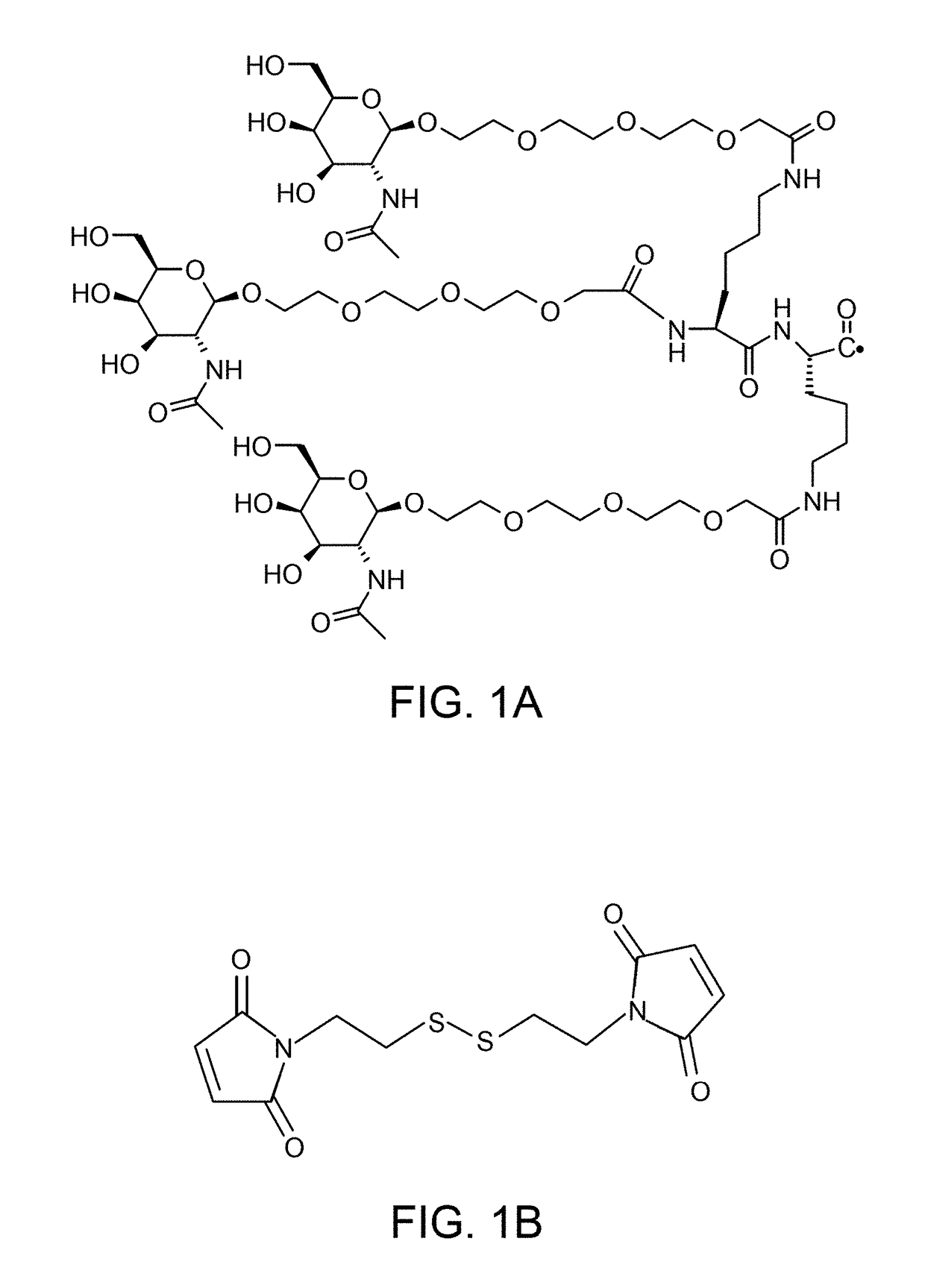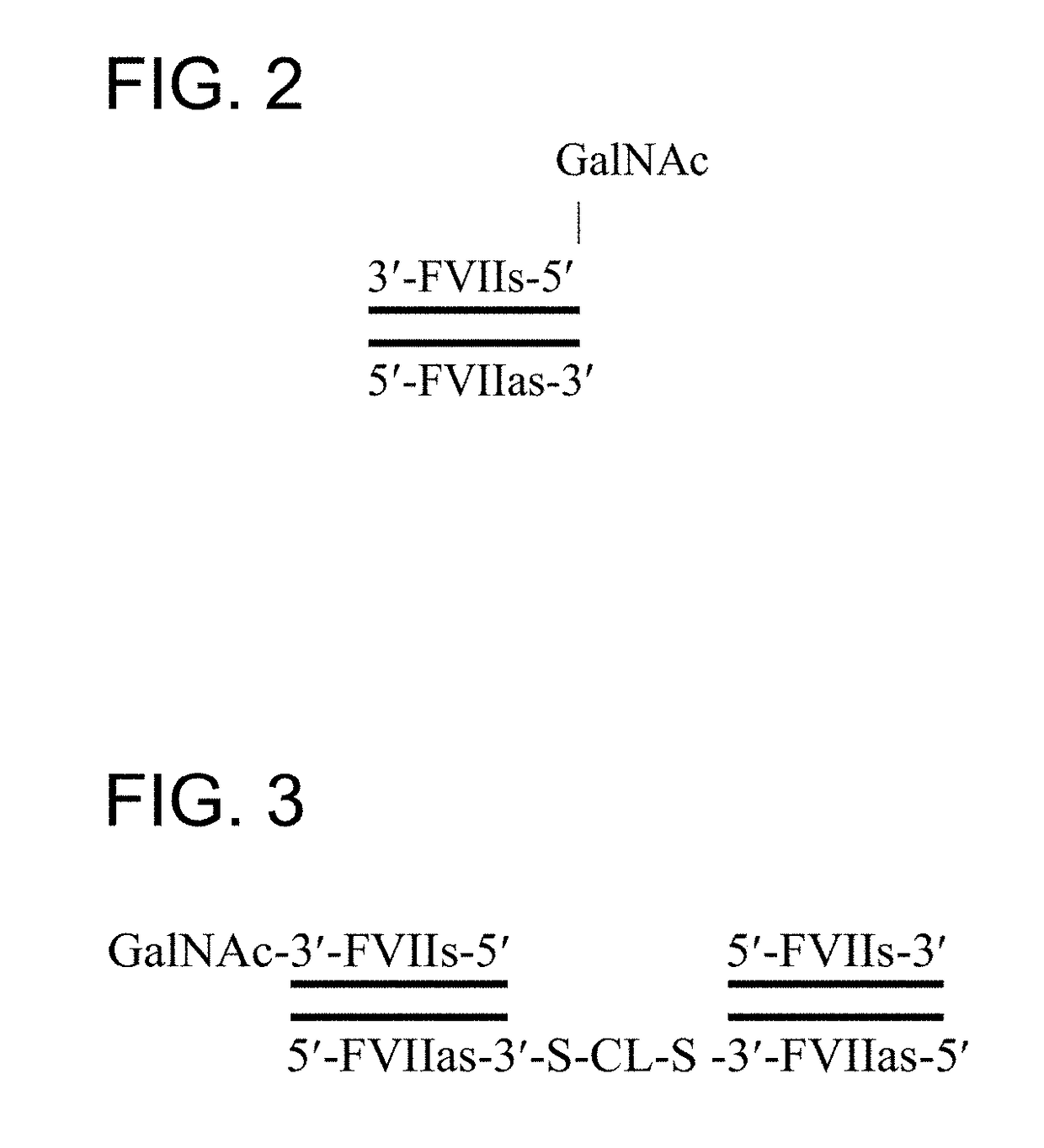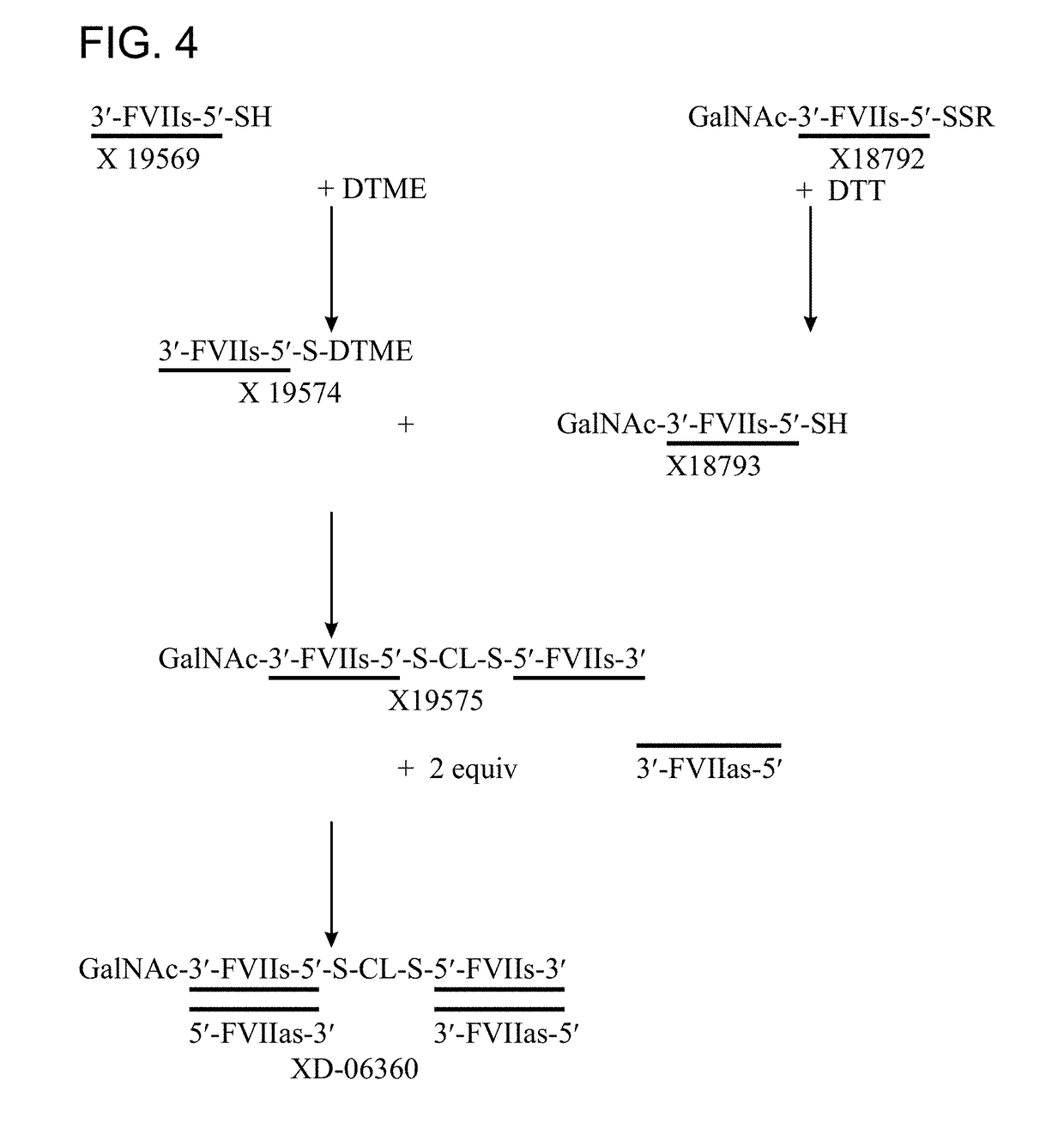Multimeric oligonucleotides having decreased kidney clearance
a multi-oligonucleotide, kidney-clearance technology, applied in the direction of biochemistry apparatus and processes, drug compositions, activity regulation, etc., can solve the problems of limiting oligonucleotide therapeutics, narrowed therapeutic window, and ineffective delivery, etc., to achieve reduced clearance due to glomerular filtration, low circulation half-life, and high circulation half-life
- Summary
- Abstract
- Description
- Claims
- Application Information
AI Technical Summary
Benefits of technology
Problems solved by technology
Method used
Image
Examples
example 1
n of Thiol-Terminated siRNA
[0580]Where necessary 3′- or 5′-terminal thiol groups were introduced via 1-O-Dimethoxytrityl-hexyl-disulfide, 1′-[(2-cyanoethyl)-(N,N-diisopropyl)]-phosphoramidite linker (NucleoSyn, Olivet Cedex, France). Upon completion of the solid phase synthesis and final removal of the DMT group (“DMT off synthesis”) oligonucleotides were cleaved from the solid support and deprotected using a 1:1 mixture consisting of aqueous methylamine (41%) and concentrated aqueous ammonia (32%) for 6 hours at 10° C. Subsequently, the crude oligonucleotides were purified by anion-exchange high-performance liquid chromatography (HPLC) on an AKTA Explorer System (GE Healthcare, Freiburg, Germany). Purified (C6SSC6)-oligonucleotides were precipitated by addition of ethanol and overnight storage in the freezer. Pellets were collected by centrifugation. Oligonucleotides were reconstituted in water and identity of the oligonucleotides was confirmed by electrospray ionization mass spect...
example 2
rocedure for Preparation of Mono-DTME Oligomer
[0582]Thiol modified oligonucleotide was dissolved in 300 mM NaOAc (pH 5.2) containing 25% acetonitrile to give a 20 OD / mL solution. 40 equivalents dithiobismaleimidoethane (DTME, Thermo Fisher, #22335) were dissolved in acetonitrile to furnish a 15.6 mM solution. The DTME solution was added to the oligonucleotide-containing solution and agitated at 25° C. on a Thermomixer (Eppendorf, Hamburg, Germany) Progress of the reaction was monitored by analytical AEX HPLC using a Dionex DNA Pac200 column (4×250 mm). Depending on the required purity level excess DTME is either removed by size exclusion HPLC using a HiPrep column (GE Healthcare) or the crude reaction mixture is purified by preparative AEX HPLC using a column packed with Source 15 Q resin commercially available from GE Healthcare.
example 3
rocedure for Preparation of Dimer Via DTME Functionality
[0583]The DTME modified oligonucleotide prepared according to the procedure in Example 2 was reacted with another oligonucleotide equipped with a thiol linker. This reaction could either be carried out on the single stranded sequence or after prior annealing of the complementary oligonucleotide of one of the reaction partners. Consequently, if desired, the DTME modified oligonucleotide was reacted with the thiol modified oligonucleotide directly, or was annealed with its complementary strand and the resulting duplex reacted with the thiol modified oligonucleotide. Alternatively, the thiol modified oligonucleotide was annealed with its complementary strand and this duplex reacted with the DTME modified single strand. In all cases the reaction was carried out in aqueous solution in the presence of 300 mM NaOAc (pH 5.2).
PUM
| Property | Measurement | Unit |
|---|---|---|
| molecular weight | aaaaa | aaaaa |
| molecular weight | aaaaa | aaaaa |
| size | aaaaa | aaaaa |
Abstract
Description
Claims
Application Information
 Login to View More
Login to View More - R&D
- Intellectual Property
- Life Sciences
- Materials
- Tech Scout
- Unparalleled Data Quality
- Higher Quality Content
- 60% Fewer Hallucinations
Browse by: Latest US Patents, China's latest patents, Technical Efficacy Thesaurus, Application Domain, Technology Topic, Popular Technical Reports.
© 2025 PatSnap. All rights reserved.Legal|Privacy policy|Modern Slavery Act Transparency Statement|Sitemap|About US| Contact US: help@patsnap.com



